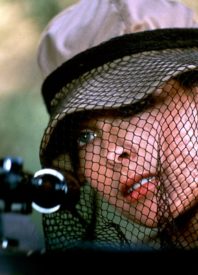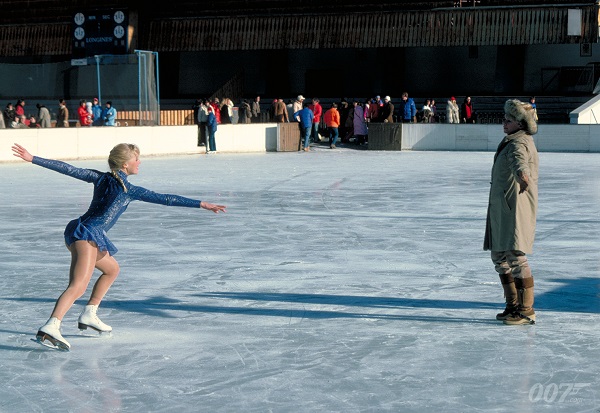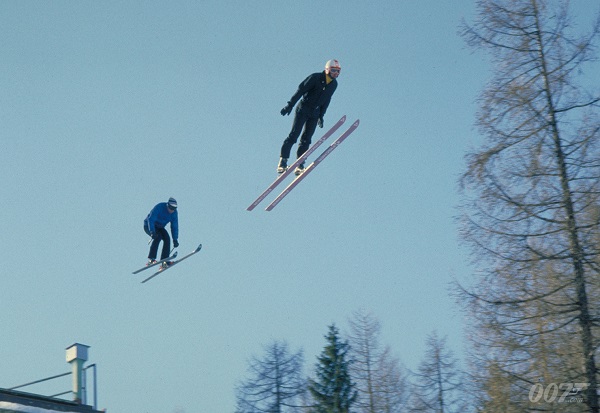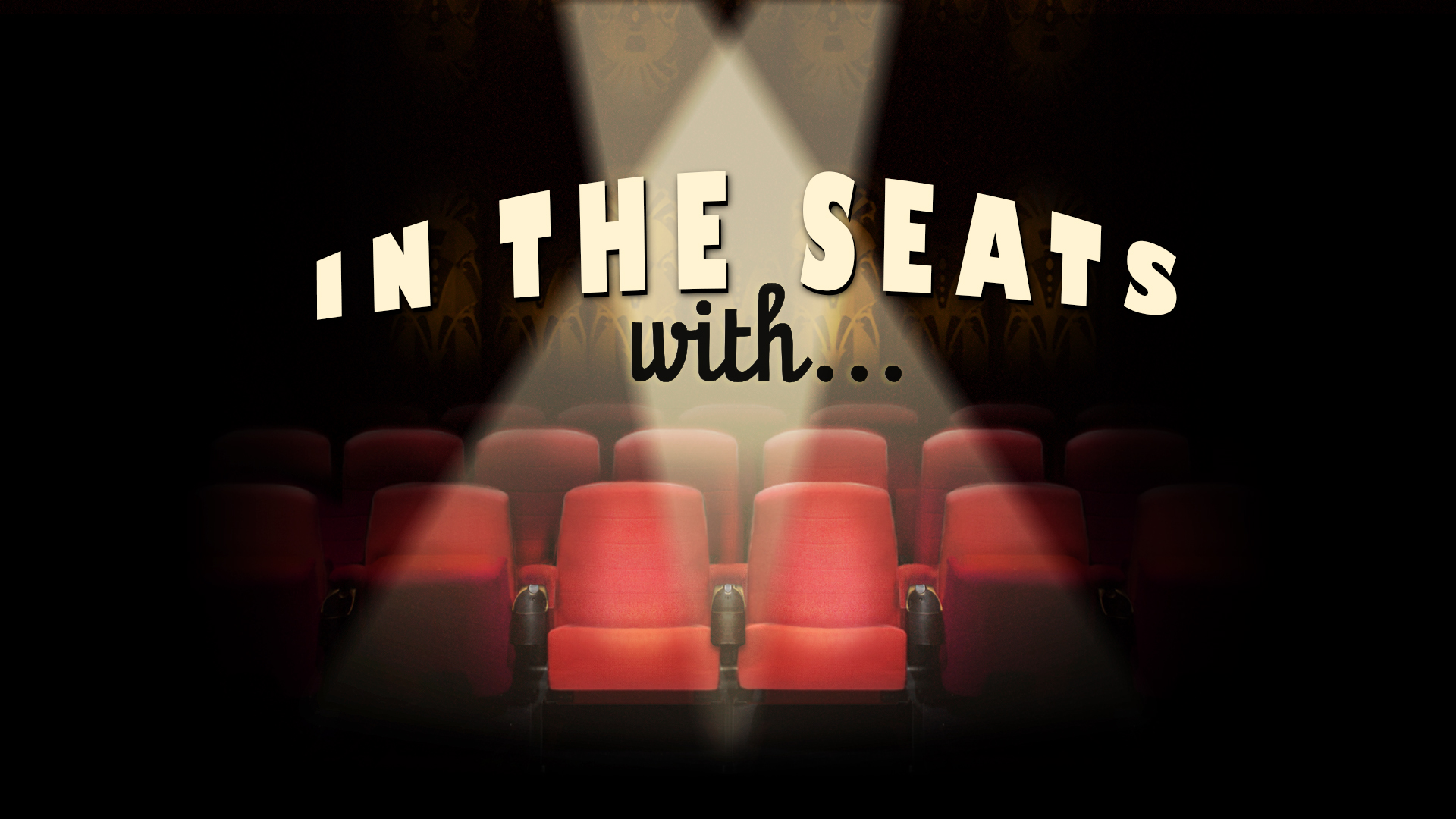
“I took the scenic route.”
Roger Moore returns for his fifth outing as Ian Fleming’s James Bond 007 in For Your Eyes Only. Although by this point, the Bond team already approached Timothy Dalton to take over the role. That’s something he wouldn’t do until 1987’s The Living Daylights. It eschews a number of the more fantastical elements that filled the previous two films. This outing, then, sets to position 007 as a bit grittier and more realistic. Editor John Glenn settled into the director’s chair in his directorial debut.
Gone is screenwriter Christopher Wood, and Richard Maibaum, and executive producer, Micheal G. Wilson pen this script that lifts thematic elements and moments from the short story collection of the same name. Despite the film’s pre-credits sequence which features a Blofeld (John Hollis) type character (his final appearance until the Daniel Craig era) producer Cubby Brococoli was intent on making the series a little more grounded and realistic than the series previous entry, Moonraker.
This outing, Bond’s twelfth, features some changes in front of and behind the camera. Bond goes after a stolen encryption device. That’s the ATAC, and he tangles himself up with a young woman. She’s Melina Havelock (Carole Bouquet). She gets a stunning reveal when she pulls off that hat and her hair spills out. And she is out for revenge for the murder of her parents. Unearthing the villain, 007 allies himself with Melina, and Columbo (Topol) to bring down Kristatos (Julian Glover). Watch for an appearance by Charles Dance. And an unmasked Boba Fett as Jeremy Bulloch shows up in Q’s lab! We also get an interesting villain henchmen in Locque (Michael Gothard) who is quiet and deadly behind his octagonal glasses.
Along the way 007 loses his gadgets, his car actually blows up before he can use it. He has to rely more on his instincts and nerve more than in any other film. Rounding out the cast is Desmond Llewelyn as Q, Lois Maxwell as Moneypenny, Walter Gotell returns as General Gogol. And sadly Bernard Lee passed before he could reprise his turn as M. 007, then, takes his orders from Tanner (James Villiers). He also takes orders from the Minister of Defence (Geoffrey Keen).
While the gadgets may be missing, the locales continue to stun as the production shot in Greece. They also shot in the UK, Italy, the Bahamas. And of course, the 007 Studio at Pinewood. Especially of note is the choice to use the Monastery of the Holy Trinity in central Greece. It serves as Kristatos base and Bond and his team lay an assault on it. This includes a well-crafted climbing sequence. It includes what would become a Glenn trademark, a jump scare featuring a pigeon.
While not quite as globe-trotting as some of the previous films, that doesn’t make the film feel smaller. In fact, after The Spy Who Loved Me, this is arguably Moore’s best Bond, and one of my favourites.
But for a couple of small issues.
The arc centred around Bibi Dahl (Lynn-Holly Johnson). With Kristatos claiming to be her sponsor, Bibi is a skating ingenue, who, for some reason, has her eyes set on Bond. At this point, as played by Moore, he was in his 50s, and it just feels a little cringe-worthy. Moore seems to be on the cusp of too old to play 007. And definitely is, if you read how Fleming wrote the character, and yet he has two more in him yet. He’s looking a little old, and a bit tired, but he’s still engaging. Then throw in Victor Tourjansky’s third, and thankfully final, appearance as the drunk tourist who does a double take during a chase sequence. And then there’s the Margaret Thatcher tag. The tag feels out of place with the serious tone of the rest of the film.
In keeping with the change of direction, Bill Conti came into score the film, taking the reins from John Barry, and turns in a satisfactory, if not necessarily noteworthy score. In terms of music, the film has a couple of interesting claims. The Academy nominated the theme song, that Sheena Easton croons. And to date, she is the only performer to appear in the titles sequence, created once again by Maurice Binder. It also served as the film’s promotional music video (sans credits) and the first made for the series.
And while there’s no standout stunt in the film, there is a lot of spectacular stunt and model work including lots of work on skis, a keelhauling sequence lifted from the Live and Let Die novel, a remote controlled helicopter. And a perspective model during the pre-credits sequence, that Derek Meddings oversaw. He also had to create a believable way to shoot dry for wet when the crew learned that Bouquet was uncomfortable filming underwater. Check those scenes out again now that you know that. There was some underwater photography that the Bahamas unit did.
Peter Lamont takes over from Ken Adam as production designer for the film, and consequently the sets are a little more realistic, and less opulent. A little more believable in this world, and Bond’s. And in terms of believability, or at least continuity, this is another film that makes reference to the fact that Bond married someone. He visits Tracy’s grave at the beginning of the film, and her epitaph is “We have all the time in the world.”
Behind the scenes continuity also has this little 007 nod, Cassandra Harris, who plays Lisl, was the wife of Pierce Brosnan at the time, who in turn would finally don Bond’s tux in 1995, after not being able to take the role in 1987 due to his commitment to his television series, Remington Steele.
When it came to promoting the film, the ad campaign came under fire for its poster. There is one designed by Bill Gold and painted by Brian Bysouth that served on both the UK quad and the US one sheet, but the one that everyone remembers is the one sheet and advance sheet that featured an image of Moore’s Bond, gun in hand, framed by a pair of long legs (model Joyce Bartle) in what, at the time, was deemed a skimpy swim suit, all shot and designed by Gold.
This uproar caused conservative groups to complain, and lobby against the film and also caused the poster to be released in some markets with the Barte’s backside covered in jean shorts that were added in afterwards.
For Your Eyes Only opened to mixed reviews on 26 June, 1981 and showed that while a Bond film could play it fairly straight and serious, it could, in fact, be time for a new 007.
Having said that, this film was my first introduction to James Bond, as I saw adverts for it for Super Channel and First Choice during the early 80s, it fired my imagination, though it would be a few years until I was finally allowed to see one.
As the film draws to its close and the credits roll up the screen, we are informed, happily, that James Bond Will Return in Octopussy.
As always thank you to DK Canada for access to their 007 library including Bond by Design: The Art of the James Bond Films, James Bond: 50 Years of Movie Posters, and The James Bond Encyclopedia.
- Release Date: 6/26/1981



